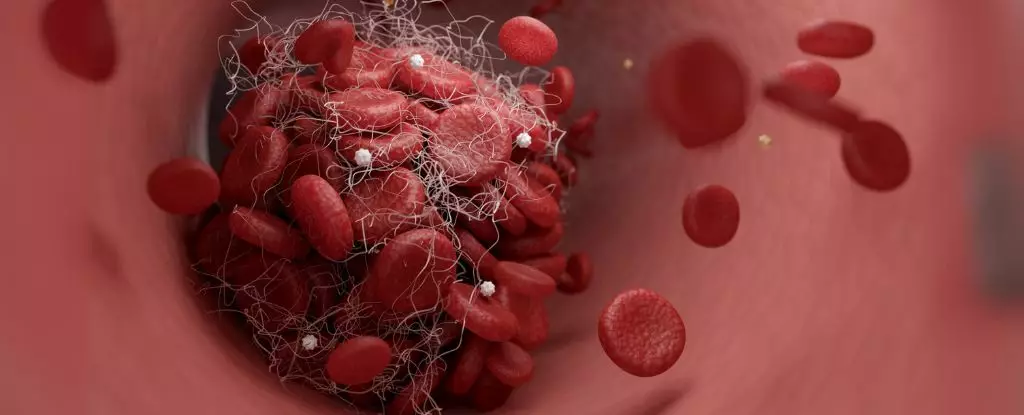Stroke is often dismissed as a health concern reserved for the elderly, but this perception is alarming and misleading. In my experience as a neurocritical care nurse, I have witnessed the profound impact stroke can have not just on the individual but also on their loved ones. It’s imperative to recognize that strokes are increasingly affecting younger populations, particularly those under 55 years, leaving an irreplaceable void in families and communities. This shift should be a wake-up call for public health initiatives, emphasizing that stroke prevention is not just a necessity for older individuals; it is a critical concern for all age groups.
The statistics are startling and illustrate the urgency needed in addressing stroke risk factors through targeted education and preventive measures. Stroke is a leading cause of death and long-term disability in countries like England, creating a scenario where knowledge is both power and protection. Yet, awareness among the general populace remains alarmingly low. It’s time for individuals, healthcare professionals, and policymakers to acknowledge that stroke isn’t merely an inevitable part of aging; it is a health crisis that demands proactive intervention.
Understanding Risk Factors: A Multifaceted Approach
Stroke risk factors fall into two categories: modifiable and non-modifiable. The latter encompasses aspects such as age, gender, and genetic predispositions that we cannot change. For instance, women face unique risks, including factors tied to reproductive health, which makes understanding and mitigating these risks essential. Conversely, many stroke risk factors are influenced by lifestyle, such as high blood pressure, cholesterol levels, and obesity. Unfortunately, these concerns are increasingly prevalent among younger demographics, where modern social habits intersect with detrimental lifestyle choices.
Increasingly common issues like physical inactivity, poor diet, and substance abuse among younger adults sharply increase their vulnerability to stroke. Heavy alcohol consumption and illicit drug use can exacerbate these risks. Furthermore, socioeconomic factors cannot be overlooked; individuals with lower income and educational attainment often grapple with diminished access to quality healthcare and a higher prevalence of unhealthy behaviors. This duality of biological and social factors creates an urgent need for comprehensive public health strategies aimed at prevention and education.
Actionable Steps: Taking Control of Your Health
The good news is that while the consequences of a stroke can be life-altering, many risk factors are within our control. Here are some practical measures that can significantly lower stroke risk:
1. Quit Smoking: This is the most impactful change anyone can make. The dangers of smoking are well-documented; it thickens the blood and damages the vessel walls, creating a perfect storm for stroke to strike.
2. Monitor Blood Pressure: Keeping your blood pressure at a healthy level is paramount. Regular check-ups allow for early intervention, which can be lifesaving.
3. Regulate Cholesterol Levels: Understanding the connection between high cholesterol and stroke risk is crucial. Lifestyle adjustments, including dietary changes, can help manage these levels effectively.
4. Maintain Healthy Blood Sugar Levels: Elevated blood glucose damages vessels and increases stroke risks. Simple lifestyle changes, such as a balanced diet and regular exercise, can make a significant difference.
5. Achieve and Maintain a Healthy Weight: Obesity adds a tremendous burden to cardiovascular health. Lifestyle changes aimed at weight loss can drastically reduce stroke risk.
6. Embrace a Mediterranean Diet: Focusing on nutrition can profoundly affect stroke risk. A Mediterranean diet, rich in fruits, vegetables, whole grains, and healthy fats, has proven benefits.
7. Prioritize Sleep: Quality sleep is often neglected, yet it is essential for maintaining overall health, including blood pressure regulation.
8. Stay Active: Regular physical activity is crucial in preventing strokes. Strive for a minimum of 150 minutes of moderate exercise each week to enhance cardiovascular health.
A Call to Action: Shift the Narrative
Understanding the complexities surrounding stroke risk is key to shifting public perception and improving health outcomes. We must foster a culture that prioritizes preventative healthcare and empowers individuals with knowledge and access to resources. Initiatives that target education regarding stroke symptoms, risk factors, and preventive measures can be transformative.
Every individual, regardless of age, has the potential to significantly impact their health trajectory. By implementing lifestyle changes and demanding better healthcare access, we can collectively combat the increasing incidence of stroke. Embracing this proactive approach not only enhances personal well-being but also contributes to a healthier society. Every informed choice can be a step towards reducing the burden of stroke, making it a preventable condition rather than an unavoidable fate.


Leave a Reply